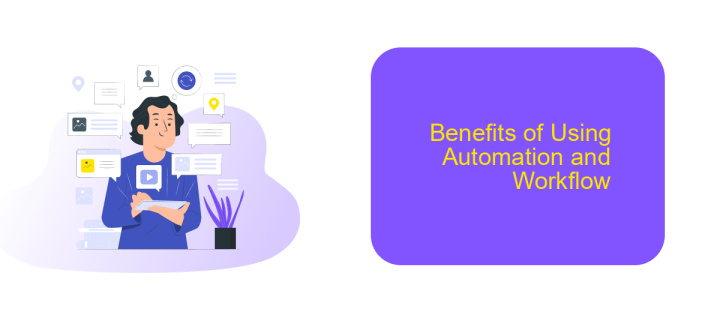Is Automation and Workflow the Same Thing?
Automation and workflow are often used interchangeably, but they represent distinct concepts in the realm of business processes. While automation refers to the use of technology to perform tasks without human intervention, workflow encompasses the sequence of steps and rules that guide these tasks. Understanding their differences is crucial for optimizing efficiency and productivity in any organization.
What is Automation?
Automation refers to the use of technology to perform tasks without human intervention. It aims to improve efficiency, accuracy, and speed by allowing machines and software to handle repetitive and time-consuming activities. This process can be applied in various fields such as manufacturing, IT, marketing, and customer service.
- Increased productivity: Automation helps complete tasks faster and with greater precision.
- Cost savings: Reducing the need for manual labor can lead to significant cost reductions.
- Consistency: Automated processes ensure uniformity and reduce the risk of human error.
- Scalability: Automation allows businesses to scale operations without a proportional increase in resources.
Tools like ApiX-Drive facilitate automation by enabling seamless integration between different applications and services. This allows businesses to streamline workflows and ensure that data flows smoothly across various platforms. By leveraging such tools, companies can focus on strategic activities rather than getting bogged down by routine tasks.
What is Workflow?

Workflow refers to the series of tasks and processes that are followed to complete a particular project or achieve a specific goal. It involves the sequential steps that need to be taken, the people responsible for each task, and the tools or systems used to facilitate these processes. Workflow helps in organizing and streamlining operations, ensuring that tasks are completed efficiently and effectively. It is a structured approach that can be applied across various industries to enhance productivity and maintain consistency.
In modern businesses, workflows often involve the integration of various software and tools to automate repetitive tasks and improve coordination. Services like ApiX-Drive play a crucial role in this context by enabling seamless integration between different applications and systems. ApiX-Drive allows users to set up automated workflows without requiring extensive coding knowledge, making it easier to connect different platforms and streamline operations. This not only saves time but also reduces the potential for human error, ensuring that workflows run smoothly and efficiently.
Automation vs. Workflow

Automation and workflow are often used interchangeably, but they serve different purposes in business processes. Automation refers to the use of technology to perform tasks without human intervention. Workflow, on the other hand, is a sequence of steps that are followed to complete a task or process.
- Automation: This involves setting up systems to perform repetitive tasks automatically. For example, using software to send emails or update databases without manual input.
- Workflow: This is the structured sequence of tasks that need to be completed to achieve a specific goal. It often involves multiple people and steps, and can include automated tasks as part of the process.
While automation can be a component of a workflow, they are not the same. Automation focuses on efficiency by reducing manual effort, whereas workflow ensures that tasks are completed in the correct order. Tools like ApiX-Drive can help integrate and automate various services, enhancing both automation and workflow processes.
Benefits of Using Automation and Workflow

Automation and workflow management are essential components for enhancing business efficiency. Automation refers to the use of technology to perform tasks without human intervention, while workflow management involves the organization and optimization of business processes. Together, they streamline operations and improve productivity.
One of the primary benefits of using automation and workflow management is the reduction of manual errors. Automated systems perform repetitive tasks with high accuracy, minimizing the risk of mistakes. Additionally, these systems can operate around the clock, ensuring continuous productivity.
- Increased efficiency and productivity
- Reduction of manual errors
- Cost savings
- Improved compliance and reporting
- Better resource allocation
Services like ApiX-Drive facilitate seamless integration between various applications and systems, making it easier to automate workflows. By connecting different tools and platforms, businesses can ensure data consistency and real-time updates, further enhancing operational efficiency. Overall, automation and workflow management are crucial for modern businesses aiming to stay competitive and agile.
Conclusion
In conclusion, while automation and workflow share similarities, they serve distinct purposes in streamlining business processes. Automation focuses on executing repetitive tasks without human intervention, enhancing efficiency and reducing errors. Workflow, on the other hand, encompasses the broader sequence of steps and decision points that guide a process from initiation to completion, ensuring that tasks are performed in the correct order and by the appropriate personnel.
Integrating these two concepts can significantly enhance operational efficiency. Tools like ApiX-Drive facilitate seamless integration by allowing businesses to connect various applications and automate workflows effortlessly. By leveraging such services, organizations can ensure that their processes are not only automated but also aligned with their strategic goals, leading to improved productivity and better resource management. Ultimately, understanding and effectively implementing both automation and workflow can drive substantial improvements in business performance.


FAQ
What is the main difference between automation and workflow?
Can automation exist without a workflow?
Can workflows function without automation?
How can automation improve workflows?
What tools can help integrate automation into workflows?
Apix-Drive is a simple and efficient system connector that will help you automate routine tasks and optimize business processes. You can save time and money, direct these resources to more important purposes. Test ApiX-Drive and make sure that this tool will relieve your employees and after 5 minutes of settings your business will start working faster.

